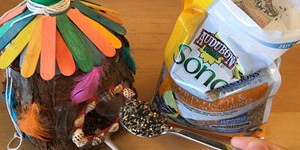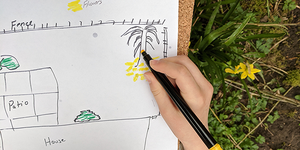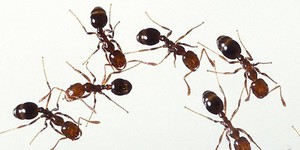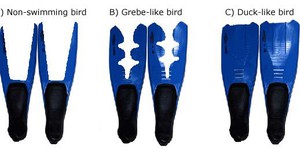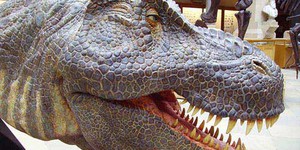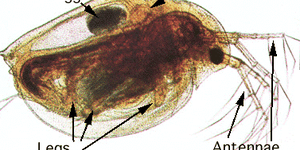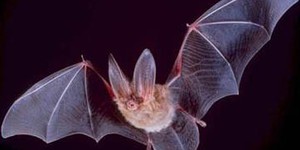Others Like “Here Today, Gone Tomorrow: Saving Migratory Animals” (top 20 results)
|
In this fun science project, you will create a bird feeder from recycled materials that you can set up outside. By observing the birds that come to the bird feeder, you will find out what different kinds of birds live in your area. How many different kinds of birds do you think you will spot?
Read more
How do conservation biologists know which places are important to protect? How do nature guides know which animals can be found in which places? In this experiment you can discover how maps can be used to show how different animals are distributed in a local environment.
Read more
Have you ever wondered what a wildlife biologist does? Ronnie and Denise from DragonflyTV found out firsthand when they worked with a local wildlife biologist to take a survey of the fish populations in their local lake. They wanted to determine what the biodiversity (number of different species in a habitat) was like so that they could find out how healthy the lake habitat was. In this science fair project you can take on the role of a wildlife biologist by examining the biodiversity of…
Read more
Do you wish that you had duck feet? Aside from being a fun Dr. Seuss story, there is a lot you can learn about hydrodynamics by looking at the feet of birds. How are the feet of birds that swim unique? Find out in this experiment.
Read more
Believe it or not, scientists were recently able to recover tissue from a 68-million-year-old Tyrannosaurus rex fossil! Not only were they able to purify non-mineralized tissue, but they also succeeded in obtaining partial sequence information for protein molecules in the T. rex tissue. In this genomics science fair project, you will use the T. rex's protein sequence to search sequence databases for the its closest living relatives.
Read more
We are all familiar with the nursery rhyme, "Rain, rain, go away, come again some other day...", or
the song "Singin' in the Rain." Numerous songs and stories describe our feelings about rain. Why so many?
Because we humans understand how important rain is to our well-being. Rainfall, as part of the
water cycle, brings water back to Earth that had previously evaporated or transpired
from the surface. When water vapor in the atmosphere condenses into clouds and falls back to Earth as rain,…
Read more
Changes in the environment, or stimuli, affect your behavior and movement over the course of a day: When you get cold, for instance, you might get up and put on a sweater. Or if it is sunny and warm, you might go outside to play sports or go for a walk. Different stimuli, including light, affect the movement of other organisms as well. But how does the type of light influence their movement? Do they respond differently to different kinds of light, depending on other factors in their…
Read more
Do you have bats in your neighborhood? Have you heard them "whoosh" by you, but not been able to see them? In this science fair project, you will be able to detect flying bats by listening in on the ultrasonic signals they produce to locate objects in their environment. The bat detector is a useful and fun tool for studying the biology of this nocturnal flying mammal.
Read more
In the wild there are two types of animals: the hunters and the hunted. A good predator is always on the prowl for fresh prey. What can an animal do to stay off of the menu? Some animals have evolved to use a variety of camouflage tactics so they can fool their predators and increase their chances of survival. In this science project, you will be the hungry predator hunting for M&M® prey. But it may not be as easy as it sounds — some of your prey will be camouflaged. Will they be…
Read more
This project idea is inspired by former NASA engineer Mark Rober's "Squirrel Ninja Obstacle Course":
You do not need to build a full obstacle course as intricate as Mark's (although you certainly can if you want to!) to make this into a fun science project. For example, how far can squirrels jump? You could test this question by building a mobile post and placing it next to a bird feeder. The bird feeder in Figure 1 is mounted on a metal pole. The pole is protected by a squirrel baffle, a…
Read more
|
Explore Our Science Videos
Popsicle Stick Chain Reaction -STEM activity
Popsicle Stick Catapult
Crayon Rock Cycle


